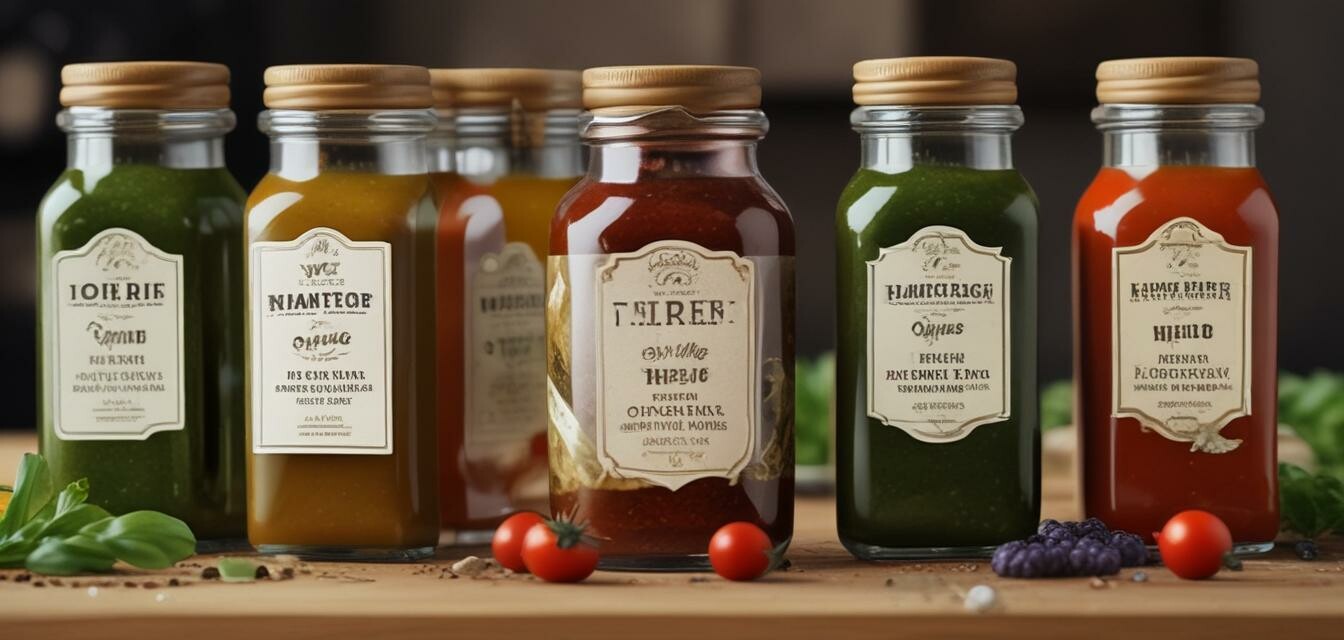
Essential sauces every cook should know
Learning to make and use essential sauces can dramatically elevate your home cooking. These versatile sauces serve as the backbone of countless dishes and can enhance flavors, add depth, and bring life to various culinary creations. This article will guide you through the must-know sauces every cook should master and provide tips on how to use them effectively.
Key Takeaways
- Learning essential sauces can transform your cooking.
- Each sauce serves a specific purpose and can be adapted to various dishes.
- Mastering these sauces enhances your culinary flexibility and creativity.
Why are sauces important in cooking?
Sauces add flavor, moisture, and visual appeal to your dishes. They can also provide a satisfying contrast in textures, enriching the overall dining experience. Knowing how to make a few key sauces can empower you to improvise and personalize your cooking. Whether you want to whip up a quick weeknight meal or impress guests during a dinner party, understanding essential sauces is essential for every cook. If you want to dive deeper into enhancing your skills, check out our Cooking Tips & Techniques category.
Essential sauces every cook should know
| Sauce Name | Description | Usage |
|---|---|---|
| Marinara | A classic Italian tomato sauce made from tomatoes, garlic, and herbs. | Perfect for pasta dishes, as a pizza base, or dipping sauce. |
| Alfredo | A creamy sauce made with butter, cream, and parmesan cheese. | Great for fettuccine, drizzling over vegetables, or as a pizza base. |
| Pesto | A fragrant sauce made from fresh basil, garlic, pine nuts, and olive oil. | Wonderful for pasta, sandwiches, or as a finishing touch to grilled meats. |
| Teriyaki | A sweet and savory sauce made from soy sauce, sugar, and ginger. | Ideal for glazing meats, stir-frying vegetables, or as a marinade. |
| Hollandaise | A rich, buttery sauce made from egg yolks, butter, and lemon juice. | Commonly used in eggs benedict, drizzled over asparagus or fish. |
How to make each essential sauce
Marinara Sauce
Ingredients:
- 2 cans of crushed tomatoes
- 3 cloves of garlic, minced
- 1 onion, chopped
- 2 tablespoons of olive oil
- Fresh basil, salt, and pepper to taste
Instructions:
- Heat olive oil in a pan, add onion and garlic. Sauté until softened.
- Add crushed tomatoes and bring to a simmer.
- Season with basil, salt, and pepper. Simmer for 20-30 minutes.
Alfredo Sauce
Ingredients:
- 1 cup heavy cream
- ½ cup unsalted butter
- 1 cup grated parmesan cheese
- Salt and pepper to taste
Instructions:
- Melt butter in a saucepan over medium heat.
- Stir in the cream and simmer for a few minutes.
- Add parmesan and stir until melted. Season with salt and pepper.
Pesto Sauce
Ingredients:
- 2 cups fresh basil leaves
- 2 cloves garlic
- ½ cup olive oil
- ¼ cup pine nuts
- ½ cup grated parmesan
Instructions:
- Blend basil, garlic, pine nuts, and Parmesan in a food processor.
- Slowly add olive oil while blending until smooth.
- Season with salt and pepper to taste.
Teriyaki Sauce
Ingredients:
- ½ cup soy sauce
- ¼ cup brown sugar
- 1 teaspoon grated ginger
- 1 clove garlic, minced
- 1 tablespoon cornstarch (optional for thickening)
Instructions:
- Combine soy sauce, brown sugar, ginger, and garlic in a saucepan.
- Bring to a simmer and allow sugar to dissolve.
- If you want a thicker sauce, mix cornstarch with water and add it to the sauce while stirring.
Hollandaise Sauce
Ingredients:
- 3 egg yolks
- 1 tablespoon lemon juice
- ½ cup unsalted butter, melted
- Salt to taste
Instructions:
- Whisk egg yolks and lemon juice together in a heatproof bowl.
- Place the bowl over a pot of simmering water (double boiler).
- Gradually whisk in melted butter until the sauce thickens. Season with salt.
Tips for using and storing sauces
For the best results, consider these tips when using and storing your sauces:
- Always taste and adjust the seasoning of your sauces before serving.
- Store homemade sauces in airtight containers; they can last in the fridge for about a week.
- Experiment with different herbs and spices to personalize each sauce to your taste.
- Use sauces to start a new dish; they can often act as a base for soups, stews, or marinades.
Beginner’s section
If you're just starting, focus on mastering one sauce at a time. Here are a few beginner-friendly options:
- Start with marinara as it’s versatile and widely used.
- Try making Alfredo for a quick creamy pasta dish.
- Pesto can also be a fun introduction, requiring no cooking.
Pros
- Enhances flavor profiles of dishes.
- Diverse sauces cater to different cuisines.
- Provides creative freedom in cooking.
Cons
- Some sauces can be high in calories.
- Complex sauces may require more ingredients and time.
- Learning to balance flavors takes practice.
Conclusion
When you master these essential sauces, you empower yourself to experiment with flavors, create new dishes, and elevate your culinary skills. Remember to keep practicing, taste as you go, and enjoy the process of cooking. Explore our other articles in our Cooking Tips & Techniques category for more helpful insights!